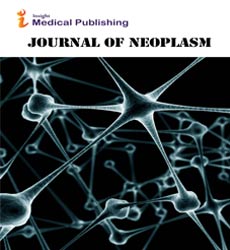Cancer Metabolism and Its Therapeutic Implications in Tumor Control
Dongho Huang
Department of Gastroenterology, University of Utrecht, Utrecht, Netherlands
Published Date: 2025-02-28<p>Dongho Huang</p>
<p>Department of Gastroenterology, University of Utrecht, Utrecht, Netherlands</p>
<p>Corresponding author:
Dongho Huang,
Department of Surgery, Tokyo Women's Medical University, 8-1 Kawada-cho, Japan,
E-mail: dongho@huang.jp</p>
<p>Received date: February 01, 2025, Manuscript No. IPJN-25-20588; Editor assigned date: February 03, 2025, PreQC No. IPJN-25-20588 (PQ); Reviewed date: February 17, 2025, QC No. IPJN-25-20588; Revised date: February 22, 2025, Manuscript No. IPJN-25-20588 (R); Published date: February 28, 2025, DOI: 10.36648/2576-3903.10.1.005
<p>Citation: Huang D (2025) Cancer Metabolism and Its Therapeutic Implications in Tumor Control. J Neoplasm Vol.10 No.1: 005.</p>
Introduction
Cancer metabolism has become a central focus in oncology research, highlighting how tumor cells undergo metabolic reprogramming to support their rapid growth, survival, and resistance to therapies. Unlike normal cells, cancer cells often rely on altered pathways, such as aerobic glycolysis (the Warburg effect), glutamine addiction, and lipid biosynthesis, to meet their high energy and biosynthetic demands. Understanding these metabolic alterations not only provides insight into tumor biology but also opens novel avenues for therapeutic interventions aimed at disrupting cancer-specific metabolic dependencies.Description
One of the hallmark features of cancer metabolism is the Warburg effect, where tumor cells preferentially utilize glycolysis for energy production even in the presence of oxygen. This metabolic adaptation allows for rapid ATP generation and accumulation of metabolic intermediates required for nucleic acid, protein, and lipid synthesis. Additionally, the acidic microenvironment resulting from lactate production contributes to immune evasion and tumor invasion, making glycolytic inhibition a promising therapeutic strategy. Drugs targeting glycolytic enzymes or lactate transporters currently under investigation as potential cancer treatments [1-3]. Beyond glycolysis, glutamine metabolism plays a crucial role in tumor progression. Many cancers exhibit "glutamine addiction," where glutamine serves as a major carbon and nitrogen source for nucleotide and amino acid biosynthesis. Targeting glutaminase, the enzyme responsible for glutamine breakdown, has shown promise in preclinical studies, particularly for aggressive cancers such as triple-negative breast cancer and pancreatic cancer. Similarly, altered lipid metabolism, including enhanced fatty acid synthesis and ò-oxidation, supports membrane formation, signaling pathways, and resistance to apoptosis, offering additional therapeutic targets. Therapeutic strategies targeting cancer metabolism are increasingly being integrated with other treatments such as immunotherapy and chemotherapy [4,5].Conclusion
In conclusion, cancer metabolism represents a critical driver of tumor growth, survival, and therapy resistance, making it a promising therapeutic target in oncology. By disrupting key metabolic pathways such as glycolysis, glutamine utilization, and lipid biosynthesis, novel therapies can selectively impair cancer cells while sparing normal tissues. As research advances, integrating metabolic interventions. with existing treatment modalities holds great potential for achieving durable tumor control and improving patient survival, thereby establishing cancer metabolism as a cornerstone of future cancer therapy.References
- Zhao G, Kong D, Xu X, Hu S, Li Z, et al. (2023) Deep learning-based classification of breast lesions using dynamic ultrasound video. Eur J Radiol 165: 110885
Google Scholar Cross Ref Indexed at
- De Jesus-Rodriguez HJ, Morgan MA, Sagreiya H (2021) Deep learning in kidney ultrasound: Overview, frontiers, and challenges. Adv Chronic Kidney Dis 28: 262-269
Google Scholar Cross Ref Indexed at
- McMaster MJ, Soule EH, Ivins JC (1975) Hemangiopericytoma: A clinicopathologic study and long-term follow-up of 60 patients. Cancer 36: 2232-2244
Google Scholar Cross Ref Indexed at
- Harris DJ, Fornasier VL, Livingston KE (1978) Hemangiopericytoma of the spinal canal: Report of three cases. J Neurosurg 49: 914-920
Google Scholar Cross Ref Indexed at
- Cappabianca P, Maiuri F, Pettinato G, Di Prisco B (1981) Hemangiopericytoma of the spinal canal. Surg Neurol 15: 298-302
Google Scholar Cross Ref Indexed at

Open Access Journals
- Aquaculture & Veterinary Science
- Chemistry & Chemical Sciences
- Clinical Sciences
- Engineering
- General Science
- Genetics & Molecular Biology
- Health Care & Nursing
- Immunology & Microbiology
- Materials Science
- Mathematics & Physics
- Medical Sciences
- Neurology & Psychiatry
- Oncology & Cancer Science
- Pharmaceutical Sciences
